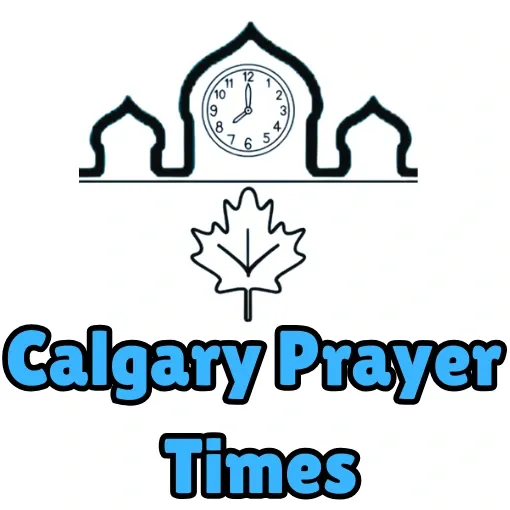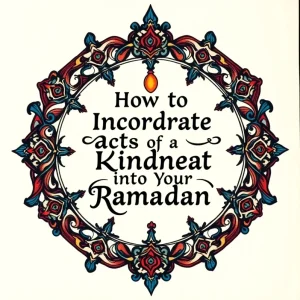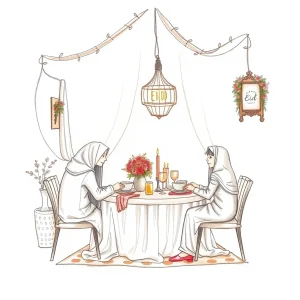Ramadan Traditions Around the World
Ramadan Traditions Around the World. Ramadan is the ninth month in the Islamic lunar calendar when Muslims worldwide observe fasting, pray, reflect, and connect with their communities through common rituals. All Muslims share the fundamental Ramadan practices, which include daily fasting through sunrise as well as increased prayer times and charitable efforts, but the specific customs during this month significantly differ between global cultural areas. Various traditional Ramadan celebrations throughout the world represent the multicultural Muslim community that connects religious spirituality with cultural festivities. The following paragraphs analyze distinctive Muslim celebrations from different nations throughout the month of Ramadan.

1. Middle East: Lanterns, Cannons, and Generosity
Middle Eastern nations observe Ramadan through various colorful cultural customs that people have upheld throughout time.
Egypt:
The streets of Egypt become vibrant with the sight of traditional colorful lights called fanoos throughout Ramadan. People use these decorative lanterns that symbolize Ramadan to decorate residential homes, mosques, and outdoor areas. Since the Fatimid era, Egyptians have preserved the tradition of displaying fanoos, which stands as an essential custom in their Ramadan celebrations. Additionally, the firing of a cannon (midfa al iftar) to signal the end of the daily fast is a tradition that continues to this day in cities like Cairo.
Saudi Arabia:
The Islamic birthplace of Saudi Arabia displays enormous respect for Ramadan during its observation. People from across the globe visit Mecca and Medina during Ramadan to conduct their Umrah , which is a less important pilgrimage than Hajj. The end of daily fasting in Ramadan triggers a cannon shot (midfa al iftar) to announce iftar time. Families then prepare traditional meals that include kabsa and sambusak for the occasion. Ghabga represents a customary Gulf region tradition where people gather for a late-night family and friend-shared meal.
United Arab Emirates:
The UAE observes Ramadan as a period when its people unite through acts of kindness. During Ramadan, hotels, together with restaurants, present lavish iftar buffets as charitable organizations carry out food package distributions to help the needy. Children observe the Haq al Laila tradition by wearing traditional clothes while visiting homes on the 15th of Sha’ban to receive sweets and nuts, similarly to Halloween practices.
2. South Asia: Food, Family, and Festivities
For Muslims in South Asia, Ramadan represents a period of spiritual contemplation that joins with celebratory celebrations and tasty feasting traditions.

Pakistan:
During Ramadan, the Pakistani streets shine with decorations while mosques become crowded with people who come to recite the Taraweeh prayers. Sehri, the pre-dawn meal, consists of satisfying food choices including parathas (flatbread) and nihari (slow-cooked meat stew). The evening meal of iftar consists of date consumption followed by samosa and pakora (fried fritter) eating. During Ramadan, people frequently host iftar parties to enjoy meals with their loved ones and other friends.
India:
Because India is home to various Muslim social groups, the cultural traditions of the Muslim holy month vary across its regions. During iftar meals in Hyderabad, people traditionally serve the popular dish haleem with wheat, meat, and lentils. In Kerala, Muslims break their fast with nombu kanji, a special rice porridge. Monthly prayer services combined with Quran recitation and food distribution activities to help the needy take place during this time.
Bangladesh:
During Ramadan, in Bangladeshi society, people unite strongly to share belongings. The city looks beautiful with its festive lighting, and mosques become crowded during the evening Taraweeh prayers. The traditional food items served during iftar meals consist of piyaju (lentil fritters), beguni (eggplant fritters), and jilapi (sweet pretzels). During Ramadan, people customarily organize iftar dawat events to offer invitations to their neighbors and friends so they can break their fast together.
3. Southeast Asia: Community and Cultural Celebrations
Through both spirituality and native customs, Southeast Asians celebrate Ramadan during this month.
Indonesia:
The country maintains the title of hosting the world’s biggest Muslim population while Indonesian people observe Ramadan at an energetic level. The traditional practice known as ngabuburit has become a cultural norm in which Indonesian communities engage in various activities during dusk to prepare for the evening meal, such as visiting markets and participating in leisure activities. The breaking of the fast normally features es buah, a traditional sweet drink, and kolak, a popular snack made from bananas and sweet potatoes in coconut milk. Ahead of the start of Ramadan, there exists a Padusan ritual that involves visiting natural springs for bathing as an act of religious cleansing.
Malaysia:
Throughout Malaysia, Ramadan becomes the period where people unite through charitable actions. The evening brings twinkling street decorations along with bazaars that present diverse food options for breaking the daily fast. During Ramadan, the most sought-after dishes are spicy meat curry rendang and bamboo-steamed glutinous rice lemang alongside traditional dessert kuih. After Taraweeh prayers, many individuals participate in the Islamic custom called moreh to share a light meal.
Philippines:
Philippine Muslims celebrate Ramadan by adapting both native and Islamic beliefs into their religious practices. The southern Mindanao region watches its Muslim population celebrate Hariraya, which brings together music and dance as well as meals during the lunar Ramadan’s conclusion. Many people follow the practice of dawat, which involves extending iftar meal invitations to others for sharing during the fast-ending period.
4. Africa: Unity and Generosity
Africa observes Ramadan through observances that capture its numerous cultural backgrounds while preserving communal connections between its people.

Nigeria:
The spiritual festivities of Ramadan unite Nigerian people while granting them opportunities to demonstrate generosity toward others. The neighborhoods become crowded with worshippers who attend Taraweeh prayers at mosques while Muslims listen to the adhan, which spreads through the streets. During iftar, Nigerians typically serve grilled barbecue meat known as suya together with kunu, a fermented grain beverage. Many Nigerians display their commitment to Sadaqah through financial donations alongside food charity for people who need assistance.
Morocco:
Morocco brings in Ramadan with the nafir fishing horn that announces the day’s fasting start. The iftar meal starts with harira soup and dates, then moves to serve tagine and couscous. Compiling at the iftar celebration is a customary practice among families and neighbors who come together to break their daily fasts. The nighttime hours during Ramadan involve musical performances and religious conversation together with spiritual gathering events.
Senegal:
During Ramadan in Senegal, communities gather for spiritual reflection together with their members. The traditional Ramadan meal during iftar consists of thieboudienne fish and rice combined with bissap hibiscus tea. People engage in ndogou, wherein they share breaking the fast time with neighbors and families while exchanging food and prayers.
5. Western Countries: Adapting Traditions in a Multicultural Context
The Muslim population in Western countries establishes Ramadan traditions based on their cultural environments yet upholds the core elements of the religious month.
United States:
The U.S. combines cultural traditions with local customs when people observe Ramadan. Numerous mosques and Islamic centers host household iftars, welcoming all community members regardless of their background. The practice of an iftar potluck*, where everyone brings a dish to share, is common. Throughout the month, people dedicate additional time to charitable efforts by organizing food collections and collecting donations for international as well as domestic nonprofits.
United Kingdom:
Ramadan represents both community spirit and cultural sharing within UK borders. Ramadan lights shine across London while Birmingham displays its decorations, and multiple mosques welcome people to open iftar events. The tradition of Ramadan tents, where people gather to break their fast together, is also popular. During Ramadan, Muslim people support community associations that organize activities for non-Muslims to share in the spirit of the month.
Canada:
Canadian residents observe Ramadan through deeply rooted community engagement, which welcomes all members of their society. Islamic organizations, along with mosques, arrange iftar dinners as an open invitation to everyone regardless of their religious background. Iftar boxes containing fasting food are given to students as well as those who need to break their daily fast alone.
FAQs About Ramadan Traditions
Conclusion
During Ramadan, Muslims across the world produce various meaningful traditions to celebrate this time of spiritual growth and fellowship while displaying generous behavior. Muslims throughout the world observe Ramadan through their unique cultural traditions that highlight the diverse heritage of the worldwide Islamic community. The traditional practices of Ramadan improve Muslims’ spiritual journey while creating shared connections between believers who reside in all corners of the world.
Throughout our observance of Ramadan, we should honor various customs while recalling that our religious month depends on sharing mercy and gratitude together with financial support for others.







